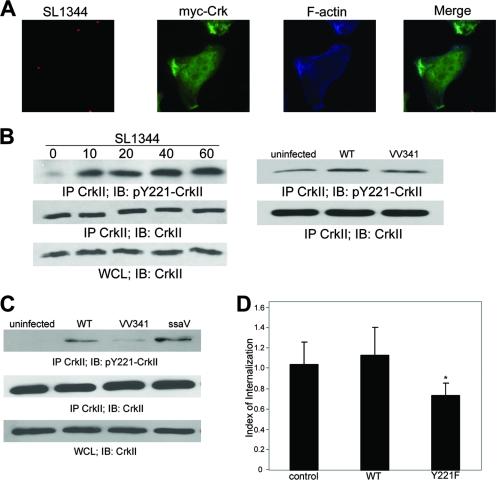FIG. 5.
Phosphorylation of CrkII at Y221 is induced by S. enterica serovar Typhimurium infection and requires an intact T3SS. (A) HeLa cells were infected with SL1344 expressing DsRed for 30 min. myc-CrkII (green) and actin-rich ruffles (blue) were visualized with monoclonal anti-myc antibody and Alexa 647-conjugated phalloidin, respectively. (B) At the indicated time points postinfection, HeLa cell lysates were collected and immunoprecipitated (IP) with a mouse anti-Crk antibody, followed by immunoblotting (IB) with rabbit anti-pY221-CrkII. WT SL1344 bacteria were used at an MOI of ∼50, while the VV341 strain was used at an MOI of ∼100. WCL, whole-cell lysates. (C) HeLa cells were infected with SL1344 or isogenic mutant strains (VV341 or the ssaV mutant) for 20 min, all at an MOI of ∼50. Lysates were collected and processed as described in the legend to panel B. (D) HeLa cells, either untransfected (control) or expressing WT CrkII or CrkII Y221F, were infected for 60 min with SL1344 at an MOI of ∼50, and internalization was quantified by using the gentamicin resistance assay described in Materials and Methods. Data shown represent an average of three independent experiments. *, P < 0.009.

